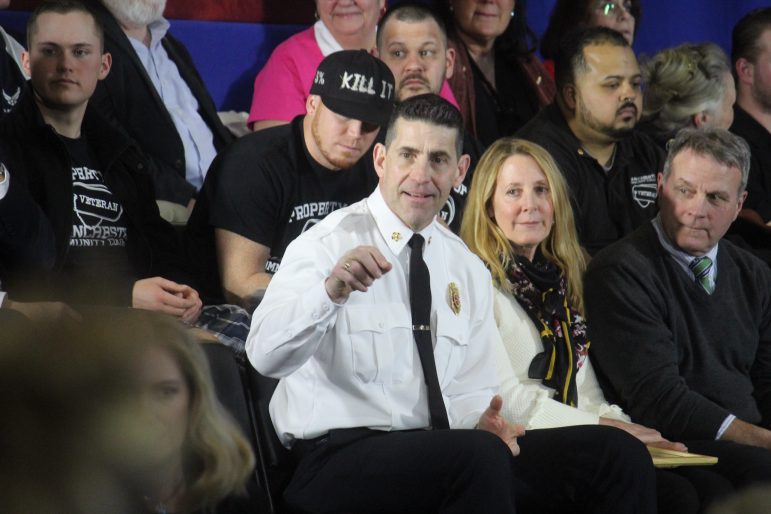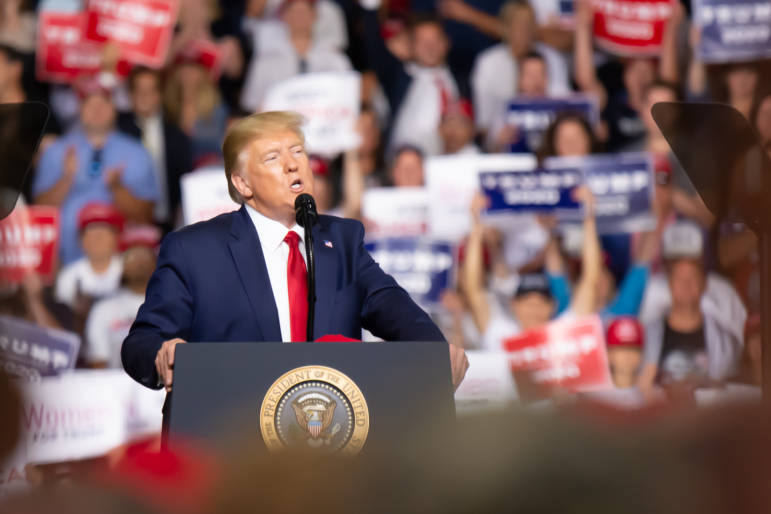
New Hampshire’s share of the State Opioid Response grants, at a glance:
| State Opioid Response Year 1: $22,982,608 | Supplement: $11,996,921 | SOR Year 2: $22,982,608 | Total: $57,962,137 |
WASHINGTON, D.C. – The U.S. Department of Health and Human Services (HHS) announced more than $1.8 billion in funding to states to continue the Trump administration’s efforts to combat the opioid crisis by expanding access to treatment and supporting near-real-time data on the drug overdose crisis.
The Centers for Disease Control and Prevention announced more than $900 million in new funding for a three-year cooperative agreement with states, territories, and localities to advance the understanding of the opioid overdose epidemic and to scale-up prevention and response activities, releasing $301 million for the first year. The Substance Abuse and Mental Health Services Administration awarded approximately $932 million to all 50 states as part of its State Opioid Response grants. By the end of 2019, HHS will have awarded more than $9 billion in grants to states and local communities to help increase access to treatment and prevention services since the start of the Trump administration.
“Thanks to President Trump’s leadership and the hard work of so many Americans in local communities, we are beginning to win the battle against the opioid overdose crisis,” said HHS Secretary Alex Azar. “Our country is seeing the first drop in overdose deaths in more than two decades, more Americans are getting treatment for addiction, and lives are being saved. At the same time, we are still far from declaring victory. We will continue executing on the Department’s 5-Point strategy for combating the opioid crisis, and laying the foundation for a healthcare system where every American can access the mental healthcare they need.”

In his statement on the allocation made at the White House on Wednesday, Azar referenced a trip to Manchester he made with President Trump in 2016 as the launch of the Trump Administration initiative.
“Over the past two years, under President Trump, CDC has dramatically sped up its data reporting. When the President took office, overdose data, nationally, was only published with a 12-month lag. With the help of better reporting from local health departments, we’ve gotten that down to six months now. That’s just one example of the results we’ve seen under this President.
A year and a half ago, I joined him in Manchester, New Hampshire, to launch his opioid initiative. He called for action, and that’s what we’ve delivered. The President said we would prevent addiction by addressing the problem of overprescribing. Since the President took office, the total amount of opioids prescribed is now down 31 percent.”
As part of HHS’s strategy to combat the opioid crisis, the Center for Disease Control and Prevention is committed to preventing opioid misuse, overdose, and death and is disseminating resources, messages, and funding. This funding from CDC will help state and local governments track overdose data as close to real-time as possible and support them in work to prevent overdoses and save lives.
Funding for the first year is being awarded to 47 states, Washington, D.C., 16 localities, and two territories. Over the past decade, reporting of mortality data has improved substantially, mainly due to improvements in reporting by state vital records offices. CDC has worked diligently to provide financial and technical assistance to help improve the quality, timeliness, and specificity of surveillance data in states and communities across the nation, and these funds will continue to support this critical work. States may report nonfatal data as quickly as every two weeks and report fatal data every six months.
The State Opioid Response grants from the Substance Abuse and Mental Health Services Administration provide flexible funding to state governments to support prevention, treatment, and recovery services in the ways that meet the needs of their state. HHS has worked to ensure that this grant program, made possible by funding President Trump secured from Congress in 2018, is focused on providing evidence-based treatment, including the gold standard for treating opioid addiction: medication-assisted treatment. These grants have been awarded to all 50 states, Washington, D.C., and U.S. territories. In addition to the approximately $500M released earlier this year, SAMHSA released $932M in continuation funding to support the second year of the State Opioid Response program.
These grants come after the Health Resources and Services Administration, in August, awarded nearly $400 million in grants to community health centers, rural organizations, and academic institutions to help them establish and expand access to substance abuse and mental health services.
Earlier this month, HHS also proposed to modernize regulations that can pose significant barriers to caring for Americans struggling with substance use disorders, including opioid addiction, to make sure they get the effective, coordinated care they need.
Efforts to expand treatment are succeeding: Data suggests approximately 1.27 million Americans are now receiving medication-assisted treatment, out of approximately 2 million Americans with opioid use disorder. Since President Trump took office, the number of patients receiving buprenorphine has increased 28 percent, and the number of naltrexone prescriptions per month has increased 55 percent.
From 2017 to 2018, provisional counts of drug overdose deaths dropped by five percent, and overdose deaths from opioids went down 2.8 percent from 2017 to 2018. The number of individuals reporting pain reliever misuse decreased from 2017 to 2018 by 11 percent, with fewer than 10 million Americans now reporting misuse. Heroin-related opioid use disorder also decreased significantly among young adults.
In April of 2017, HHS announced a 5-Point Strategy to Combat the Opioids Crisis. Those efforts include better addiction prevention, treatment, and recovery services; better data; better pain management; better targeting of overdose reversing drugs; and better research.







